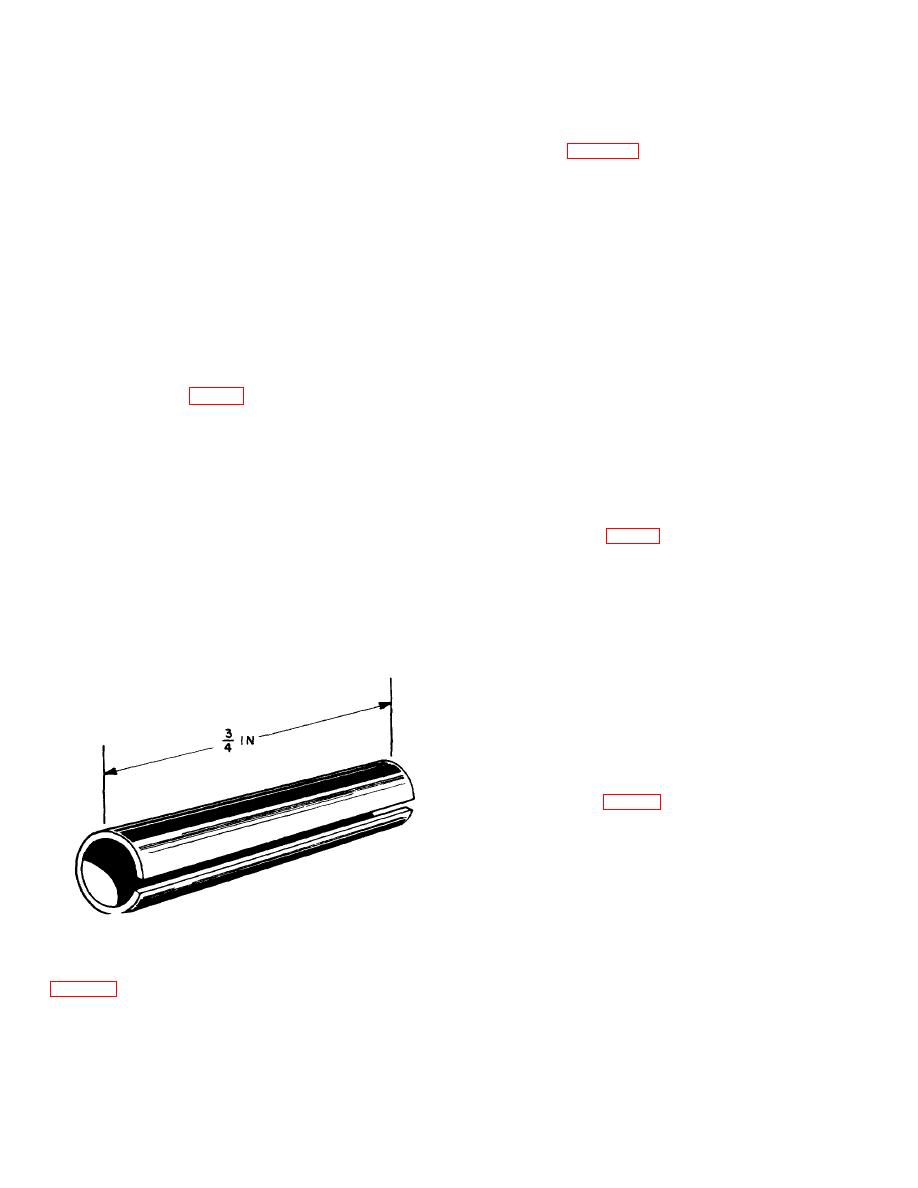
Section VI. SPECIAL PROBLEMS
burning propellants are used.
(The selection of
43. General. The design of propellant actuated
propellants and the determination of burning rates are
devices presents many special problems, but this
discussed in chapter 5.)
section covers only some of the more important. The
following paragraphs include discussions of shear pins,
b. Dampers are used frequently to limit the
buffer systems, high-low systems, and the use of
acceleration of stroking devices. Separate, oil filled,
protective coatings and dissimilar metals.
piston damping devices can be located between the
44. Shear Pins. a. Shear pins provide a simple means
propellant actuated stroking device and the load to limit
of locking parts together but have inherent
the acceleration of the piston, and, therefore, the
disadvantages. When the unit is assembled or partly
velocity. Most thrusters that use dampers, however, are
assembled, there is seldom any way of insuring that the
developed with internal damping for a more compact
shear pin was not forgotten, and even if one end of the
design. In the simplest type of damper, a liquid with
pin were visible, there would be no guarantee that the
suitable temperature and viscosity characteristics is
pin was not bent or already sheared. The shear value or
confined in a cylinder having a piston and orifice. The
shearing force of shear pins may vary by as much as 20
thruster piston and damper piston are connected (or
percent from pin to pin, although all are made of the
integral) so that motion of the thruster piston is resisted
same material and are the same size.
by the damper. Piston velocity is determined by the rate
of flow of the damping liquid through the orifice.
pins. They may be used in propellant actuated devices,
c. The design of damping systems requires
but in accordance with Military Standards, they may not
consideration not only with such obvious factors as
be used in single shear. Military standards also specify
viscosity of the liquid at various temperatures and its
the maximum and minimum hole sizes in which the
effect on rate of flow, but also expansion of the liquid at
various size spring pins may be used.
higher temperatures. It may be necessary to include a
void or a replenisher in the damper liquid chamber.
c. One of the greatest faults of shear pins is the
One design compensates for expansion by use of a
possibility of failing after a series of light blows, each
"floating piston" (fig. 39). In this example, the spring
unable to produce failure, but in the aggregate causing
between the main piston and the floating piston acts to
it.
maintain constant pressure in the buffer liquid. At -65
45. Damping Systems. a. When gas pressure is
F., the volume of the oil is at a minimum and the spring
developed in the chamber of a stroking device,
compensates by expanding; at 200F., the oil volume is
operating against a comparatively light load, the piston
greatly increased and the spring compensates by
is subjected to a relatively high accelerating force. One
compressing.
method of reducing the initial high rate of change of
d. The design of the spring is similar to that of
acceleration is through ballistic
springs for mechanical firing mechanisms, so it will not
be repeated here. In most stroking devices using
dampers, the damping liquid is a silicone oil with a
relatively constant viscosity throughout the temperature
range of propellant actuated devices.
e. One other damping system which warrants
attention is the "hydraulic multiplier" (shown
schematically in fig. 40). This device contains a gas
piston and a load piston which is connected to the load.
An orifice in the load piston permits liquid to pass from
the liquid chamber into the
Figure 38. Spring pin.
control. For example, high-low systems (described in
increased, and slower-burning or more progressive-
43


